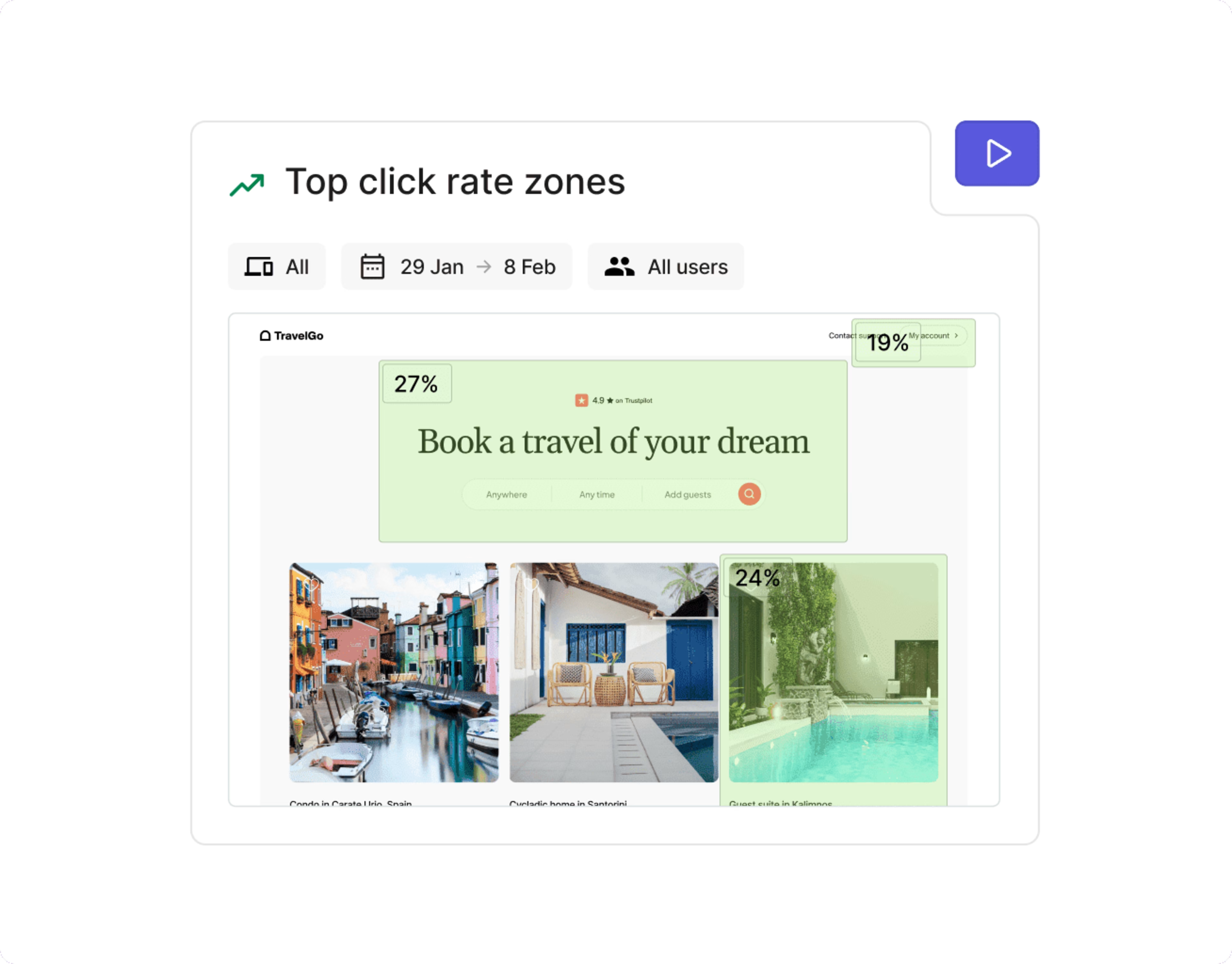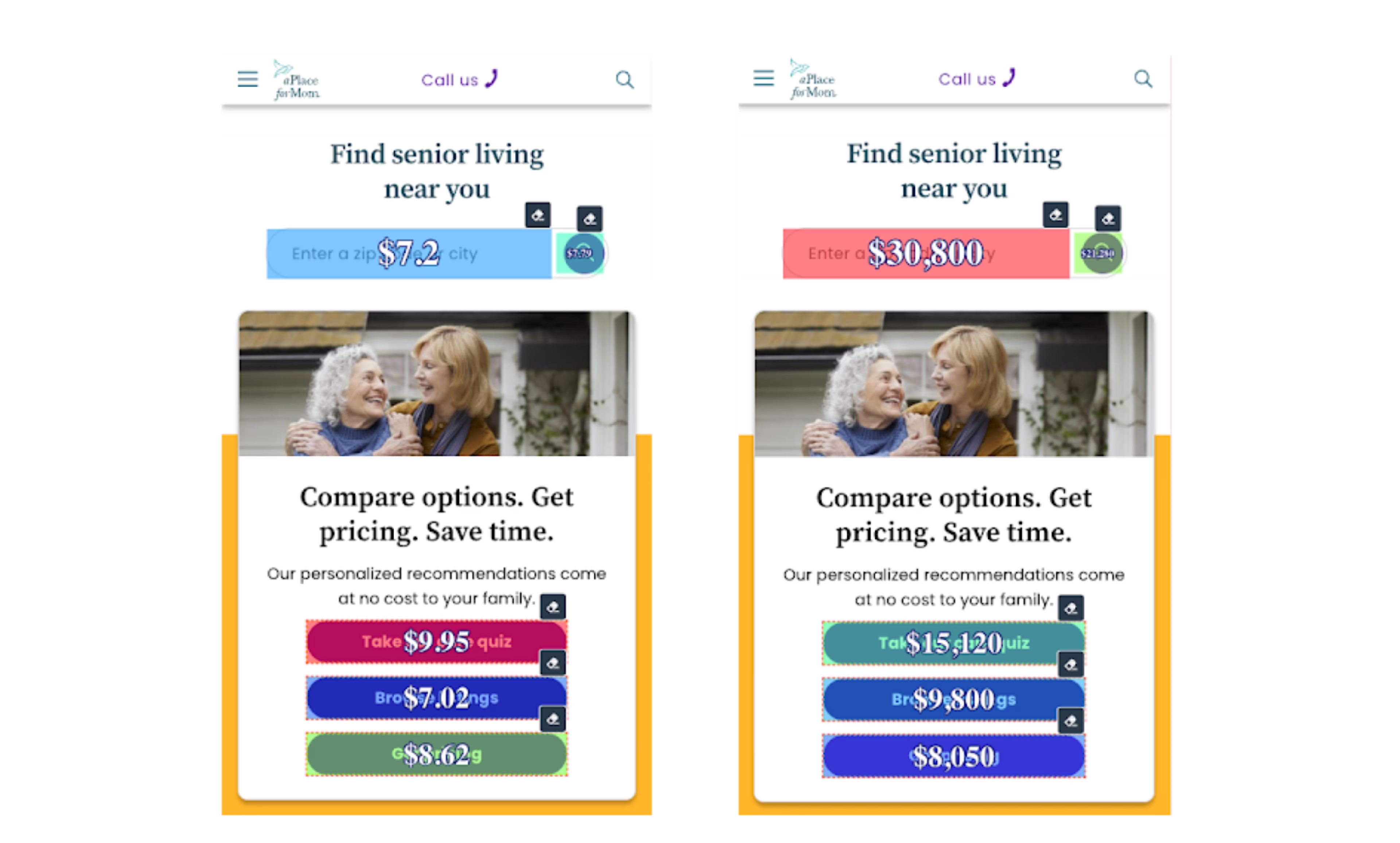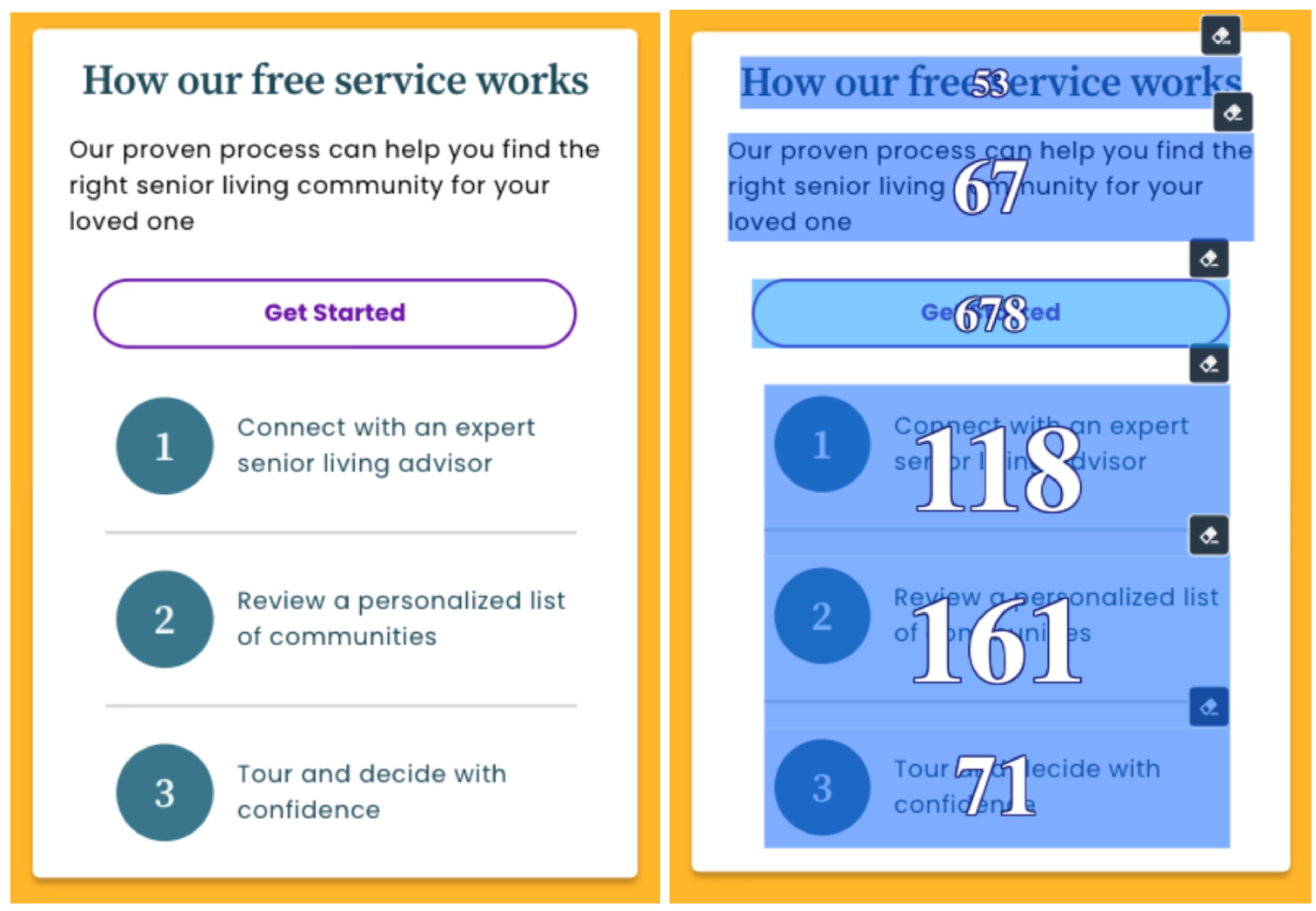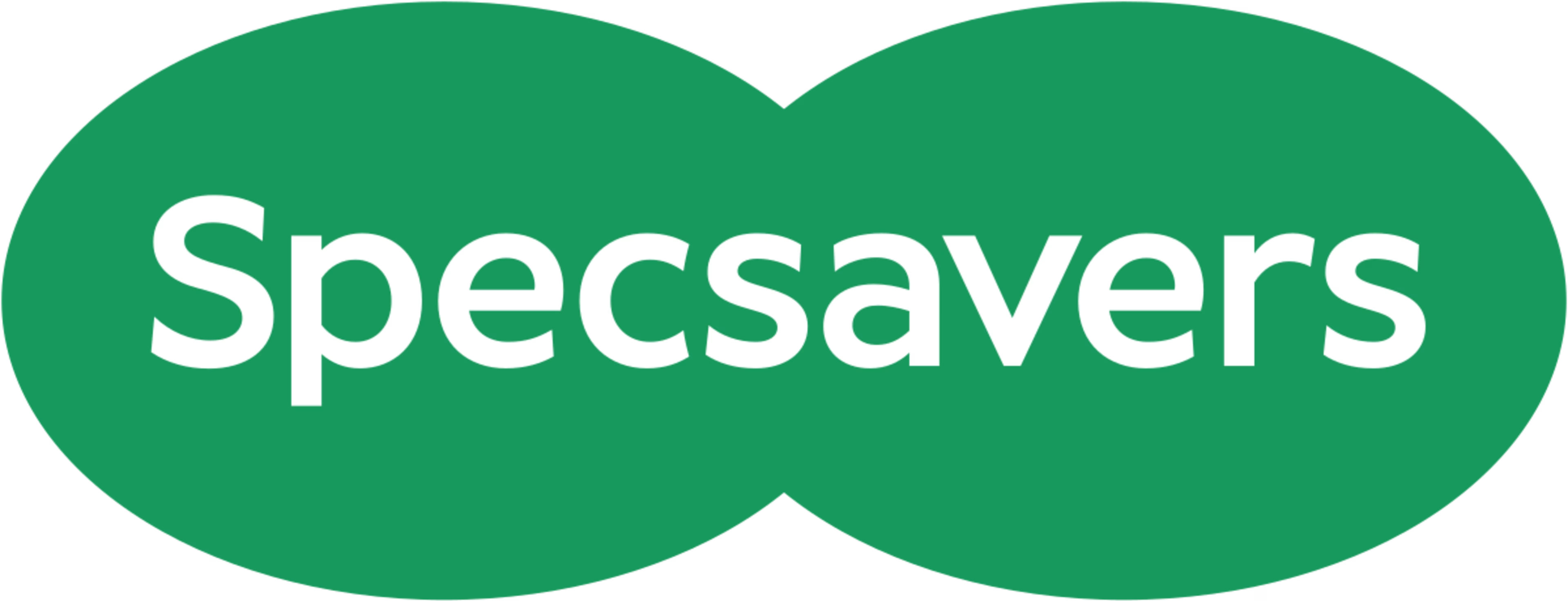The company
As the leading online platform and advisory service for caregivers, A Place for Mom provides insight-driven and personalized solutions for caregivers looking after senior loved ones.
The company has the largest senior care network in the U.S., giving customers access to over 14k senior living communities, over 4k home care providers, and over 400 local experts—helping over 300k families per year.
The challenge
For A Place for Mom (APFM) to fulfill its mission of enabling caregivers to make the best decisions for their families, the company’s product teams have a customer-centric focus. They talk to customers regularly, solve customer problems, and have established key performance indicators (KPIs) tied directly to usability and customer satisfaction.
The customer’s needs are at the forefront of everything APFM does. Contentsquare is integral to identifying and meeting those customer needs, providing valuable insights into the company’s website experience that helps APFM make that experience as seamlessly engaging as possible.
For Tim Braga, Senior Product Director, Conversion & SEO at APFM, the success of the company’s website experience is tied to how much value the it can bring to families. This value is shown through lead generation and each lead is tied to a monetary value.
"We apply a dollar score to every form that’s submitted on the site, which enables us to look at all our core flows against revenue data," explains Tim. "This lets us really understand what’s working, what’s not working, what’s driving clicks, and what’s driving revenue."
It’s also a relatively lean business ("almost like a big start-up", says Tim). That means its teams have to move fast, not least when making data-driven decisions to optimize the company’s website.
"Once we have data, we try to do something with it immediately," says Tim. "If you have an insight into our website that could help optimize the experience, we want to understand that learning so we can understand how and when we can slice it into our roadmap.”
For a business like APFM, it’s critical to have an extremely user-friendly and powerful web analytics platform in place—a platform that gives everyone in the business (not only those in technical roles) the power to pull behavioral data on site visitors and make speedy optimizations based on it.
Fortunately, they have just such a platform in place: Contentsquare.
The solution
Teams at APFM use Contentsquare to gain insights into the behavior of their website visitors, act on those insights, and measure the impact of those actions—all at the pace their start-up culture demands.
1. Optimizing pages to minimize frustration

Contentsquare lets us quickly understand how users are engaging with and experiencing our website—and helps us identify any issues that are blocking the path to conversion.

"Contentsquare allows us to quickly understand how users are engaging with and experiencing pages on our website,” says Tim. "After a landing page is launched, for example, we can get in there very, very early and see how page elements are performing, and what the knock-effect on conversion rate and revenue is."
“The platform also helps us identify issues blocking the path to conversion,” says Tim. “For example, using heatmap analysis, we might spot a page element that visitors are rage-clicking on, which means that element could be broken or just misleadingly captioned.”
“Or we might notice that the call-to-action (CTA) button has a low exposure rate, which means only a certain percentage of visitors are scrolling far enough down to see it—and so it probably needs to be moved up.”

Contentsquare's Heatmaps capability in action
These optimization efforts are overseen by leaders from APFM’s product, marketing, and content teams, who meet multiple times per week to discuss what they’re working on, such as insights in Contentsquare, Optimizely A/B tests they’re running, insights they’ve discovered, metrics they’re tracking, and so on.
However, while team leaders provide some top-down strategy, the critical requirement for an ultra-agile business like APFM is that anyone in the business can surface an opportunity and work with the product team to capitalize on it.

In Product, we connect actions and investments to business outcomes. This means we need to understand and measure the problem, put together our hypothesis, and decide if and when to ship to market. Contentsquare is a key part of that pre and post analysis.

It’s Contentsquare’s user-friendly experience intelligence platform that makes this possible.
2. Democratizing data analytics
There are now 20 Contentsquare users at the company and, with Tim encouraging more teams to use it, this number is set to grow.
“We encourage people across content, marketing, and product to use Contentsquare as much as possible,” says Tim. “We push the product design team to utilize Contentsquare as they evaluate their in-market user journeys and experiences they've designed. This maintains our data-driven and iterative approach: we learn as we go and release iteratively, but we always have a broader plan and never settle for a 'poor experience'!”
In Tim’s experience, encouraging people to learn and use Contentsquare isn’t hard—so long as you take the right approach.
“One thing we love about Contentsquare is how it democratizes data,” he says. “It’s really straightforward for anybody to understand and use it, and get insights from it that they can easily share with others. That said, it can be like a big puzzle at first. There’s a lot to learn!”
To help new users understand how Contentsquare works and its potential impact on their work, Tim starts them off on a live zoning browser extension.
With a single mouse-click, this extension transforms the users’ view of their website into a live dashboard showing an overlay of key user experience (UX) metrics like click recurrence, hesitation time, and engagement rate, for every zone of each page.
For those who haven’t yet used Contentsquare, using the browser extension is revelatory.
“It gives them a taste of what Contentsquare can do,” explains Tim. “Immediately they can see how you can use Contentsquare to view heatmaps on pages for dozens of different metrics and dimensions. And once they’re hooked, they just get deeper and deeper into it.”
3. Driving revenue with regular optimization
With an increasing number of people at APFM using Contentsquare, the company is in a great position to continue to optimize its website, get quality leads, and drive revenue—the metric that marketing, product, and content are all aligned around.
“We want to help as many families as we can in their search for senior living assistance,” explains Tim. “We do this by connecting families to our senior living advisors through lead conversion. We place a dollar amount on each lead that is submitted so we can understand how each part of the site is providing value to our families.”

The more conversion our site drives, the more help we are providing to families in need. Contentsquare is uniquely valuable to us as it visually ties behavior on the website to revenue. That’s powerful in helping our product team understand how helpful and performant our experiences are.

2 optimizations the web team has made using Contentsquare
1. The team recently analyzed some CTAs within the hero section on the site’s homepage by revenue—and identified several that were falling short. In response to this, they planned to adjust the hero section sequence to maximize engagement.

2. Analyzing the website’s ‘How our Service Works’ section with Contentsquare, the team found that many people were clicking on the 3 (unclickable) steps below the CTA. In response, they made these sections clickable, removing a potential source of frustration from the experience and helping customers to find exactly what they were looking for.

"Now, of course, these weren’t decisions that generated millions of dollars in revenue or anything like that!" says Tim. “But it’s this kind of insight that we can bring back to the team to solve, get to market quickly, and often see a positive impact on our revenue. Contentsquare enables us to make those tweaks again and again, and that adds up."
What’s next
Tim and his team's primary focus is to continue driving organic traffic to the APFM site and converting quality leads down the funnel.
To this end, in the last year they’ve been working hard to make sure the APFM site is performing at optimum speed and meeting Google’s Core Web Vitals (CWV).
As well as ensuring Google doesn't penalize APFM’s search ranking, this focus on site speed also minimizes the frustration associated with slow-loading and responding sites that (as reported in our 2025 Digital Experience Benchmark report) reduces session depth—the number of pages viewed—by -6.0%.
Speed alone isn’t enough, however. Converting quality leads also depends on content and an optimized UX—which makes Contentsquare a crucial component of APFM’s strategy for success.

Ultimately, content is still king. We’re definitely focused on getting as much quality content on our site as possible. Contentsquare will be critical in helping us understand if and how our content is getting us the leads we need.




